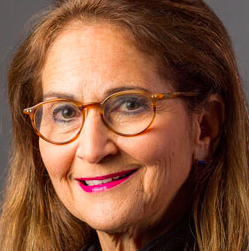
OUR SENIOR CONTRIBUTOR HAS A DARK VIEW OF ALASKA’S FUTURE
ART CHANCE
We’re almost there. Public employee unions are one election away from complete control of the State, and they almost pulled it off in the last election.
Gov. Bill Walker is a dead man walking and his shotgun marriage with the unions/Democrats will end as soon as Mark Begich or some other credible Democrat emerges. Begich is showing signs of running despite protestations to the contrary.
My experience with both unions and Democrats has taught me that if you want to know what they’re doing or planning just watch and listen to what they say they’re not doing or planning.
Sen. Bill Wielechowski is the wild card; if he wins his suit to restore the Permanent Fund, he can be elected governor by acclamation if he wants it.
The Democrats will work that out in some rich person’s living room. As things stand, the next Governor will be a Democrat, the House will remain in Democrat control, and the Senate seems very likely to become Democrat controlled.
The Left and the media, with a lot of help from self-styled “true conservatives” and pro-lifers have done a very good job of demonizing the Republicans in the Legislature.
If the ‘true conservatives’ and pro-lifers hated Democrats as much as they hate Republicans who don’t toe their line, the opposition to the unions/Democrats wouldn’t be so hopelessly fragmented.
The Senate hasn’t done a good job of getting out its message or establishing its image, but Sen. Kelly is right: The Republican majority in the Senate is the only thing that has stood between the citizenry and an income tax, loss of citizen access to the earnings of the Permanent Fund, and punishing oil taxes that will effectively remove the oil industry as a political force in Alaska.
Control of the Senate and complete control of the Governor will allow the Left to assume control of the government with little regard for what those not in their constellation of constituencies thinks about what that government does.
The bulwark of the Left’s support is unionized public sector and Third Sector employees. Contrary to the mythology, there is almost no private sector unionization in the U.S. or in Alaska. What looks like private sector unionized employers are employers that are dependent on the government for their revenue, are heavily regulated by the government, or are government monopolies, e.g., utilities.
Unions have the trades workers on publicly funded projects and work for the crony capitalists who are union contractors so they can get that work. The merchant mariners in much of the Alaska trade are union because the Jones Act mandates an American bottom and crew.
Utility employees are union because the utilities either belong to a government or are government protected monopolies in which the union and the management are essentially co-conspirators against the taxpayers and rate payers.
Alaska’s public employees are almost all union because the unions lobbied politicians to give them the public employees, not because the employees organized so they could become union. None of the State’s unionized employees have ever voted in an election in which being non-union was a meaningful choice.
Labor Board regulations require that “No Representative” be a choice on a representation ballot but nobody in State government has ever uttered a word in support of no representation, and everyone in a position to make that utterance meaningfully knows that it would be their career death warrant the minute there was a Democrat government.
Even the initial unionization back in the Seventies really only gave the employees a choice of which union was to represent them, and in some units there was no choice at all; the unions just divvied up the employees among themselves. In my 20 years with State labor relations there were two representation elections, but they were only elections to decide which union was to represent the group of employees.
There were a handful of representation petitions, but they too were only about carving out specific groups of employees for a separate union. Union control over State government is so firm that when the leaders of a veto-proof Republican majority in both bodies recoiled from union abuses in the 1996 election and tried to amend the Public Employment Relations Act (PERA) so that it had at least the same protections against union abuses that the federal Labor-Management Relations Act has, the leadership couldn’t get the votes in the House to pass it.
Anchorage is no different; everyone who isn’t a Muni employee should have voted to support AO-37, yet the unions repealed it with a decisive vote.
I’m pretty sure I have more experience with public sector labor relations than anybody in the state and it is my considered opinion that the union grip on governments in Alaska cannot be loosened by ANY democratic process.
Many on the conservative/Republican side talk of right to work legislation; no legislature, whether Democrat or Republican controlled, will pass it, and if they did, no governor with further political ambitions would sign it.
There is nothing like the organization on the conservative/Republican or business sides to defeat the unions with an initiative; ask former Mayor Sullivan. That leaves the courts, and here there is some hope, if there is the will and resources.
This line of attack only applies to the State and not even to all State employees though it applies to the vast majority of them. It may apply to polisub employees who are paid from State funds and could be applied to other polisub employees, but each polisub would be a separate endeavor, and the outcome would depend on their ordinances and funding.
Almost uniquely, the Alaska Constitution requires that the State maintain a “merit system” of employment. That Constitutional requirement is articulated in the State Personnel Act at AS 39.25.010. Essentially, all managerial actions toward State employees, hiring, disciplining, dismissing, promoting, transferring, etc., may only take place for a reason related to merit.
Myths notwithstanding, it isn’t a union contract that requires “cause” or “just cause” to discipline or dismiss a State employee; it is the State Personnel Act and the Alaska Constitution. This is the thinking that underlays my arguments to the Alaska Labor Relations Agency that led to ALRA Decision and Order 110, removing most actions related to job classification from the scope of the collective bargaining duty under the PERA. Decision and Order 110 was upheld by the Alaska Supreme Court in APEA v. State in the early ‘90s.
Hiring an employee because s/he is the one the union sent over from the Hall is not a reason related to merit. Promoting an employee because the union contract says the most senior employee must be promoted is not a reason related to merit. And most importantly, firing an employee for not paying union dues is a reason not related to merit.
If not compelled to pay dues, the vast majority of State employees would not pay them; this has been demonstrated in the past when the State has refused to enforce the union security clauses of expired contracts, and the State’s refusal to do so has been upheld by the ALRA.
It is unlikely that any of the white/gray collar units, general government, supervisors, confidential, could maintain their majority. The labor, trades, and crafts unit has somewhat more union loyalty and might maintain a majority. The correctional officers and cops have considerable union loyalty, but even they would shed dues paying members.
A suit asserting this line of argument is a direct attack on the constitutionality of significant portions of the PERA as they have been applied to State employees subject to the State Personnel Act (SPA). All classified State employees are subject to the SPA, while partially exempt employees are subject to some
Exempt employees are not subject to the SPA so this would not apply to unionized Marine Highway employees or State teachers or employees of quasi-governmentals, at least not on these precise grounds.
The unions would view this as an existential battle; it is, and they would nationalize opposition. Proponents can count on the unions mounting every form of opposition and bringing in the best legal talent money can buy. There will be direct personal attacks on anyone who offers support and especially anyone who gives legal assistance or money. There will certainly be large protests and might well be violence.
Under this or any other Democrat administration, the State would vehemently oppose this suit. Even under a Republican there’d be little State support because State lawyers and State managers know that one day there’ll be Democrat governor with a hit list and their name will be on it.
Proponents should expect to lose at the trial court level; the Democrats can always find a trial court judge who’ll do them a “great service” in exchange for an appointment to a higher court by a Democrat governor.
There is no money to be made off supporting or advocating for this suit, and any Alaska attorney who takes this own can write off doing any work for the State or political personages in the State ever again; the Democrats will hate him/her and the Republicans will be afraid of associating with someone so controversial; don’t ask me how I know.
Consequently, the predicate of any successful prosecution of the suit is securing conservative foundation and interest group support, financial aid, and legal assistance, unless there is some brave Alaska attorney who’d like to become the most hated person in Alaska since Ron and Penny Zobel.
This is the only remotely viable strategy I see to rein in unionized public employee control of Alaska’s political processes. Failing this, after the 2018 General Election, we become the Socialist Workers’ Paradise and until the money runs out, there is no place for anyone else at the table.
Art Chance is a retired Director of Labor Relations for the State of Alaska, formerly of Juneau and now living in Anchorage. He is the author of the book, “Red on Blue, Establishing a Republican Governance,” available at Amazon. He only writes for Must Read Alaska when he’s banned from posting on Facebook. Chance coined the phrase “hermaphrodite Administration” to describe a governor who is both a Republican and a Democrat. This made Democrats irritable and hermaphrodites insulted.








 CHRIS BIRCH MAKES IT ‘OFFICIAL’: On Facebook, Rep. Chris Birch of South Anchorage said he’d filed for office with APOC and will either run for House or for the Senate seat, should that become vacated by Sen. Kevin Meyer, who is mulling a run for lieutenant governor. Birch wrote:
CHRIS BIRCH MAKES IT ‘OFFICIAL’: On Facebook, Rep. Chris Birch of South Anchorage said he’d filed for office with APOC and will either run for House or for the Senate seat, should that become vacated by Sen. Kevin Meyer, who is mulling a run for lieutenant governor. Birch wrote:












